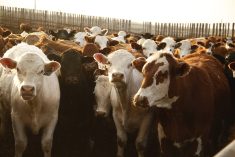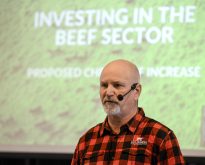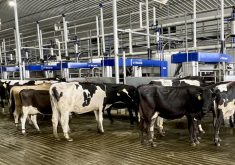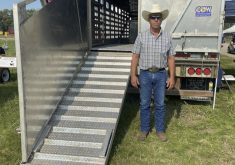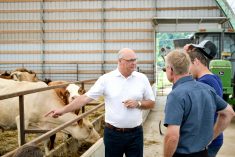Most knowledgeable cattle producers and veterinarians are consulting with promoters of low-stress cattle handling.
From an animal welfare perspective and from a public perspective, it is important.
However, does low-stress handling have additional benefits to the animals?
Read Also

Dissolving eartags could make pig traceability easier
A dissolving eartag for market hogs, called Clean Trace could reduce processing challenges and enable more individual management of pigs.
Some Kansas State University researchers attempted to answer this question a few years ago and presented their findings at the American Association of Bovine Practitioners in 2019.
The study population consisted of 80 crossbred heifers that, on average weighed about 780 pounds, and the animals were in a commercial feedlot in central Nebraska.
The researchers randomized the 80 heifers into two handling groups: a low-stress handling group and an aggressive handling group.
The heifers in the low-stress group were processed in the way we would hope all cattle would be handled. They were walked into a crowding tub and into the chute quietly. Using electric prods and hitting the cattle were not permitted and even the noise from handlers was kept to a minimum.
The aggressively handled heifers were handled in a fashion we do not recommend. They ran the cattle into the tub and through the handling facility at a lope. They applied an electric prod to each animal twice before they entered the hydraulic chute. A radio was playing loudly next to the chute and the handlers were told to yell and whistle at the cattle as they moved them.
The researchers took some baseline measurements before handling and processing and then also took samples and examined the animals after processing and on days five, 21 and 42 post-processing. The processing procedure included some routine vaccinations and the researchers also wanted to look at how the immune response was affected by the handling.
It wasn’t a surprise that they could demonstrate significant signs of stress in cattle in the aggressive-handling group. These cattle had higher respiratory rates and higher heart rates immediately after processing.
They also had significantly higher markers of inflammation in their bloodstream. Serum amyloid A is a protein in the blood that increases in the early stages of inflammation. This inflammatory marker has been used in a variety of research studies in cattle diseases and in this experiment, it was significantly higher in the aggressively handled cattle.
Stress hormones (epinephrine) tended to be higher in the aggressively handled cattle, as did another biomarker of stress known as D-lactate.
D-lactate has been used as a marker for bovine respiratory disease in other studies and is higher in calves that have BRD when compared to healthy calves.
The researchers could not demonstrate any significant differences in the immune response to the vaccines administered in this study, although they may have been limited by the size of the study.
This is just one small study, but it shows that the effects of aggressive handling of cattle have an impact on the animals’ physiology and might make them more susceptible to infectious diseases by increasing inflammatory markers. Many of the common physiological and inflammatory responses were improved when the cattle were handled in a low-stress fashion.
The main function of running our animals through handling facilities is often to administer some sort of preventive therapy like a vaccine. Beef cows and calves aren’t handled often during the year, so it is always a stressful event for the animals when we carry out these procedures.
Let’s ensure we don’t make it more stressful than it needs to be.
We must ensure our handling facilities are well designed, our handling crew knows they shouldn’t shout or use prods excessively, and we must move cattle as quietly and calmly as possible.
It doesn’t just have benefits for the public perception of our industry, it has a real impact on the cattle’s biology.
– John Campbell is a professor in the department of Large Animal Clinical Sciences at the University of Saskatchewan’s Western College of Veterinary Medicine.




